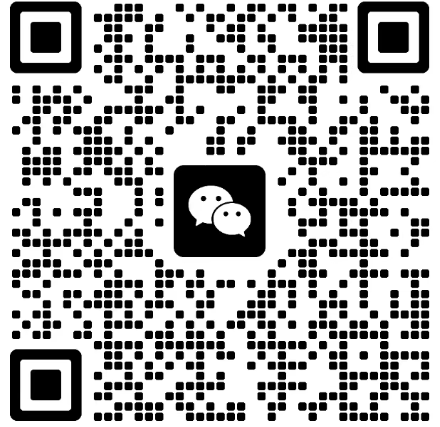 以下自考復(fù)習(xí)資料均由浙江自考網(wǎng)整理并發(fā)布,考生想要了解更多關(guān)于浙江自考報(bào)名、考試、成績(jī)查詢、畢業(yè)、歷年真題、常見問答等相關(guān)信息請(qǐng)關(guān)注浙江自考網(wǎng),獲取浙江自考更多信息。
以下自考復(fù)習(xí)資料均由浙江自考網(wǎng)整理并發(fā)布,考生想要了解更多關(guān)于浙江自考報(bào)名、考試、成績(jī)查詢、畢業(yè)、歷年真題、常見問答等相關(guān)信息請(qǐng)關(guān)注浙江自考網(wǎng),獲取浙江自考更多信息。226. Sestet(六重唱)
the six-line stanza. 3couplets/ a quatrain + a couplet/ 2 triplets.
227. Setting(背景)
The time and place in which the events in a short story, novel, play or narrative poem occur. Setting can give us information, vital to plot and theme. Often, setting and character will reveal each other.
228. Short Story(短篇小說)
A short story is a brief prose fiction, usually one that can be read in a single sitting. It generally contains the six major elements of fiction-characterization, setting, theme, plot, point of view, and style.
229. Simile(明喻)
(a figure of speech) A comparison make between two things through the use of a specific word of comparison, such as like, as than, or resembles. The comparison must be between two essentially unlike things.
230. Skaz
It‘s a Russian word used to designate a type of first person narration that has the characteristics of the spoken rather than the written word. In this kind of novel, the narrator is a character who refers to himself as “I” and addresses the reader as “you”。 He or she uses vocabulary and syntax characteristic of colloquial speech, and appears to be relating the story spontaneously rather than delivering a carefully constructed and polished written account.
231. Song(歌)
A short lyric poem with distinct musical qualities, normally written to be set to music. In expresses a simple but intense emotion.
232. Speech(說話能力)
It was defined by Aristotle as the faculty of observing all the available means of persuasion.
233. Spondee(揚(yáng)揚(yáng)格)
It consists of two stressed syllables.
234. Sprung Rhythm
A term created by the poet Gerard Manley Hopkins to designate a variable kind of poetic meter in which a stressed syllable may be combined with any number of unstressed syllables. Poems with sprung rhythm have an irregular meter and are meant to sound like natural speech.
235. Stereotype(老套模式)
A commonplace type or character that appears so often in literature that his or her nature is immediately familiar to the reader. Stereotypes, also called stock characters, always look and act the same way and reveal the same traits of character.
236. Style(風(fēng)格)
An author‘s characteristic way of writing, determined by the choice of words, the arrangement of words in sentences, and the relationship of the sentences to one another.
237. Suspense(懸念)
The quality of a story, novel, or drama that makes the reader or audience uncertain or tense about the outcome of events.
238. Synecdoche(舉隅法)
A figure of speech that substitutes a part for a whole.
239. Tone(格調(diào))
The attitude a writer takes toward his or her subject, characters, or audience. The tone of a speech or a piece of writing can be formal or intimate; outspoken or reticent; abstruse or simple; solemn or playful; angry or loving; serious or ironic.
240. Triplet(三行聯(lián)句)
The three-line stanza. Tercet: aaa, bbb, ccc, and so on; terza rima: aba, bcb cdc, and so on.
241. Trochee(揚(yáng)抑格)
the reverse of the iambic foot.
242. Villanelle(維拉內(nèi)拉詩(shī))
An intricate verse form of French origin, consisting of several three-line stanzas and a concluding four-line stanza.
243. Wit(才智)
A brilliance and quickness of perception combined with a cleverness of expression. In the 18th century, wit and nature were related-nature provided the rules of the universe; wit allowed these rules to be interpreted and expressed
聲明:
(一)由于考試政策等各方面情況的不斷調(diào)整與變化,本網(wǎng)站所提供的考試信息僅供參考,請(qǐng)以權(quán)威部門公布的正式信息為準(zhǔn)。
(二)本網(wǎng)站在文章內(nèi)容來源出處標(biāo)注為其他平臺(tái)的稿件均為轉(zhuǎn)載稿,免費(fèi)轉(zhuǎn)載出于非商業(yè)性學(xué)習(xí)目的,版權(quán)歸原作者所有。如您對(duì)內(nèi)容、版權(quán)等問題存在異議請(qǐng)與本站聯(lián)系,我們會(huì)及時(shí)進(jìn)行處理解決。
相關(guān)推薦
2023年4月浙江自考中國(guó)文化概論復(fù)習(xí)筆記:中國(guó)傳統(tǒng)的藝術(shù)審美
12-102023年4月浙江自考俄羅斯小說文體論復(fù)習(xí)資料七
11-26自考輔導(dǎo)資料:2019年10月《美學(xué)》知識(shí)點(diǎn)-美育的內(nèi)涵
09-20自考輔導(dǎo)資料:2019年10月《美學(xué)》知識(shí)點(diǎn)-審美經(jīng)驗(yàn)理論的歷史回顧
09-182023年4月浙江自考《管理系統(tǒng)中計(jì)算機(jī)應(yīng)用》串講資料四
03-14自考輔導(dǎo)資料:2019年10月《中國(guó)現(xiàn)代文學(xué)史》-30年代文學(xué)小說創(chuàng)作
09-242022年浙江自考心理實(shí)驗(yàn)設(shè)計(jì)串講資料第三章
10-20自考輔導(dǎo)資料:2019年10月《美學(xué)》知識(shí)點(diǎn)-審美發(fā)生的特殊標(biāo)志
09-162023年4月浙江自考中國(guó)文化概論復(fù)習(xí)筆記:語言文字及其文化特征
12-102023年4月浙江自考學(xué)前教育史復(fù)習(xí)筆記:抗日戰(zhàn)爭(zhēng)和解放戰(zhàn)爭(zhēng)時(shí)期
12-06 掃一掃加關(guān)注微信公眾號(hào)
掃一掃加關(guān)注微信公眾號(hào)
與考生自由互動(dòng)、并且能直接與專業(yè)老師進(jìn)行交流解答。
 掃一掃加入微信交流群
掃一掃加入微信交流群
與考生自由互動(dòng)、并且能直接與專業(yè)老師進(jìn)行交流解答。